
Browse an alphabetical list of articles about the Holocaust and World War II. Learn more about topics such as the Nazi rise to power, how and why the Holocaust happened, life in Nazi camps and ghettos, and the postwar trials.
<< Previous | Displaying results 401-444 of 1105 for "Article" | Next >>
The German-Soviet Pact paved the way for the joint invasion and occupation of Poland by Nazi Germany and the Soviet Union in September 1939.
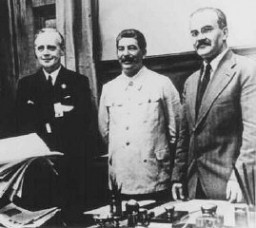
Learn more about the Jewish population in Germany in 1933.
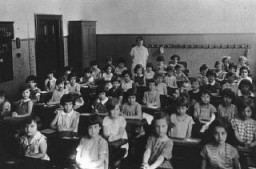
Read the Jewish Partisan Educational Foundation's short biography of Gertrude Boyarski.
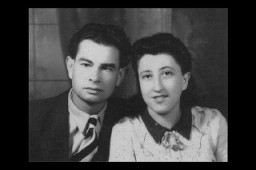
The Gestapo was Nazi Germany’s infamous political police force. It enforced Nazism’s radical impulses and perpetrated crimes against targeted groups. Learn more
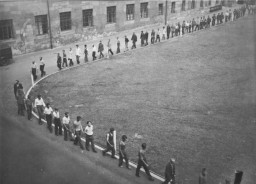
Ghettos separating Jews from the rest of the population were part of the Nazi plan to destroy Europe's Jews. Read about ghettoization during the Holocaust.
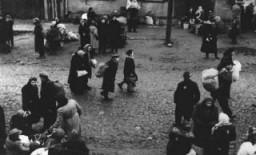
During World War II, the Nazis established ghettos, which were areas of a city where Jews were forced to live. Learn more about ghettos in occupied Poland.
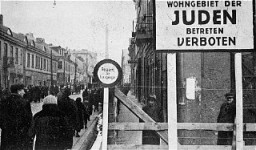
Explore Gideon Frieder’s biography and learn about his experiences as a child during the Holocaust in Slovakia.
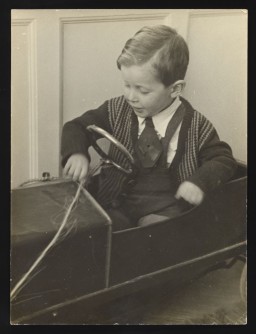
In 2013, Yad Vashem recognized Italian cyclist Gino Bartali as Righteous Among the Nations for his rescue activities. Learn more
The Jewish children of Lodz suffered harsh conditions after the German invasion of Poland. Read excerpts from diaries where they recorded their experiences.
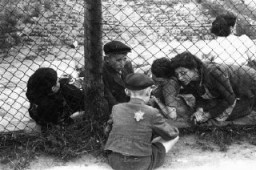
Gleichschaltung is the German term applied to the Nazification of all aspects of German society following the Nazi rise to power in 1933.
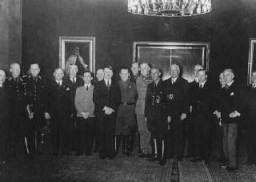
Antisemitism: hostility toward or hatred of Jews as a religious or ethnic group, often accompanied by social, economic, or political discrimination. Appellplatz: German word for roll call square where prisoners were forced to assemble. Aryan: Term used in Nazi Germany to refer to non-Jewish and non-Roma (Gypsy) Caucasians. Northern Europeans with especially "Nordic" features such as blonde hair and blue eyes were considered by so-called race scientists to be the most superior of Aryans, members of a…
Learn more about the Holocaust Encyclopedia’s key terms and individuals in the Nazi judicial system.
The Grafeneck T4 Center was the first centralized killing center to be established by German authorities within the context of the Nazi “euthanasia,” or T4, program.
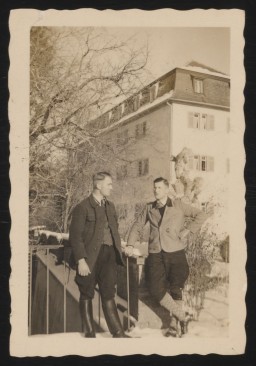
Learn about causes, scope, and impacts of the Great Depression, including how it played a role in Adolf Hitler's emergence as a viable political leader in Germany.
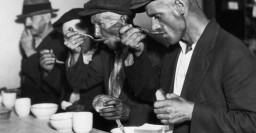

Learn about the Gross-Rosen camp, including its establishment, prisoner population, subcamps, forced labor, and liberation.
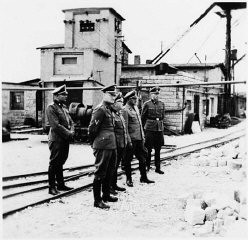
In 1939, the French government established the Gurs camp. Learn more about the history of the camp before and after the German invasion of France.
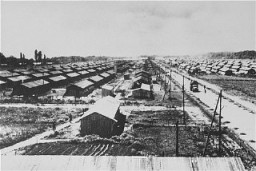
In 1940, the Nazis established Gusen concentration camp. Learn more about camp conditions, forced labor, and liberation.
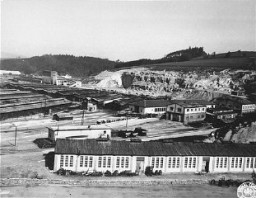
German industrialist Gustav Krupp von Bohlen und Halbach was one of 24 leading German officials charged at the International Military Tribunal.
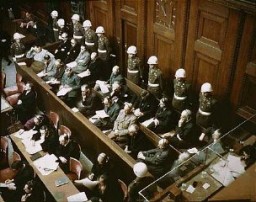
Hermann Göring held many positions of power and leadership within the Nazi state. Learn about key dates in the life of Hermann Göring.
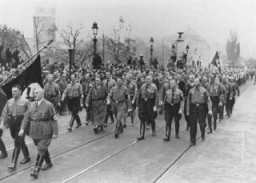
The German town of Hadamar housed a psychiatric clinic where almost 15,000 men, women, and children were killed between 1941 and March 1945 in the Nazi Euthanasia Program.
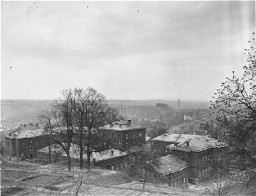
The Hadamar Trial of October 1945 was the first mass atrocity trial held in the US occupation zone of Germany following World War II.
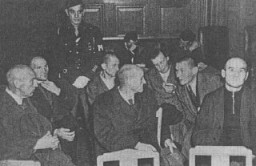
The SA established a protective custody camp at Hainewalde in March 1933. Well-known journalist and writer Axel Eggebrecht was among its early prisoners.
In 1933, the Nazis established the Hainichen labor camp in Sachsen, Germany. Learn more about the camp, its closing, and the prisoners.
Hajj Amin al-Husayni claimed to speak for the Arab nation and the Muslim world and sought an alliance with the Axis powers during WWII. Learn more about his actions
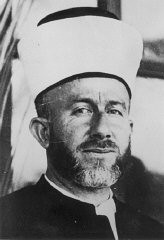
Key dates associated with Hajj Amin al-Husayni, former Mufti of Jerusalem who participated in a pro-Axis coup in Iraq in 1941. Explore further
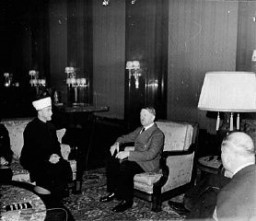
Hajj Amin al-Husayni, former Mufti of Jerusalem, participated in a pro-Axis coup in Iraq in 1941. Learn about his pro-Axis actions during WWII.

Former Mufti of Jerusalem Hajj Amin al-Husayni was an exiled political leader who sought an alliance with the Axis Powers. Learn about his wartime propaganda efforts.
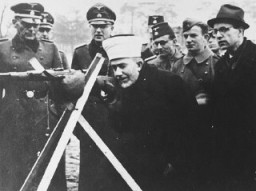
Halle an der Saale was a satellite camp of Buchenwald concentration camp. It was established by the Nazis in Saxony, Germany in 1941.
Brief overview of the charges against Hans Frank, Nazi governor general of occupied Poland, during the International Military Tribunal at Nuremberg.
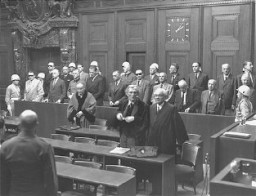
Brief overview of the charges against Hans Fritzsche, Nazi propaganda ministry official, during the International Military Tribunal at Nuremberg.

The Harrison Report criticized conditions in the DP camps, called for changes in the treatment of Jewish DPs, and recommended allowing them to emigrate to the US and Palestine.
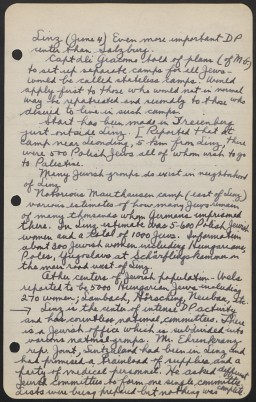
Read the Jewish Partisan Educational Foundation's short biography of Harry Burger.
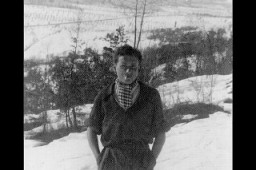
American-Jewish journalist and author Ben Hecht co-wrote the We Will Never Die pageant and advocated for the rescue of Jewish victims from Nazism. Learn more.
After WWII, many Holocaust survivors, unable to return to their homes, lived in displaced persons camps in Germany, Austria, and Italy. Read about Heidenheim DP camp.

SS Chief Heinrich Himmler was chief architect of the "Final Solution." Learn more about Himmler, one of the most powerful men after Hitler in Nazi Germany.
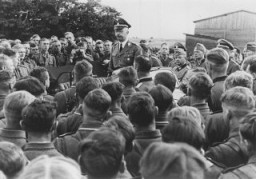
Heinrich Himmler was the leader of the dreaded SS of the Nazi Party from 1929 until 1945. Learn more about key dates in the life of Heinrich Himmler.
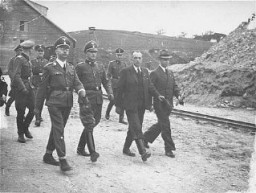
Heinrich Mann was an author and early target of the Nazis for his political views. His writings were among those burned under the Nazi regime in 1933. Learn more.
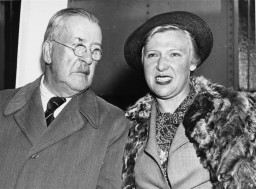
Helen Keller was an author, suffragist, and disability rights advocate. Her socialist and anti-war writing was burned under the Nazi regime in 1933. Learn more.
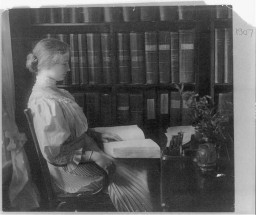
Henri Barbusse was a French author who wrote pacifist and socialist works. In 1933, his writings were burned under the Nazi regime. Learn more.
Henry Morgenthau Jr had a key role in creating and operating the War Refugee Board, a government agency tasked with rescuing and providing relief for Jews during the Holocaust.
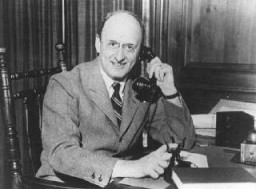
Brief overview of the charges against Hermann Göring, highest ranking Nazi official tried during the International Military Tribunal at Nuremberg.

Hermann Ludwig Maas, a Protestant pastor in Heidelberg, Germany, was a rescuer and clergyman who stood in solidarity with the Jewish community.
The Herzogenbusch concentration camp in the Netherlands began functioning in January 1943. Learn about its establishment, administration, prisoners, and conditions there.
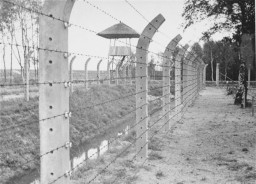
We would like to thank Crown Family Philanthropies, Abe and Ida Cooper Foundation, the Claims Conference, EVZ, and BMF for supporting the ongoing work to create content and resources for the Holocaust Encyclopedia. View the list of donor acknowledgement.